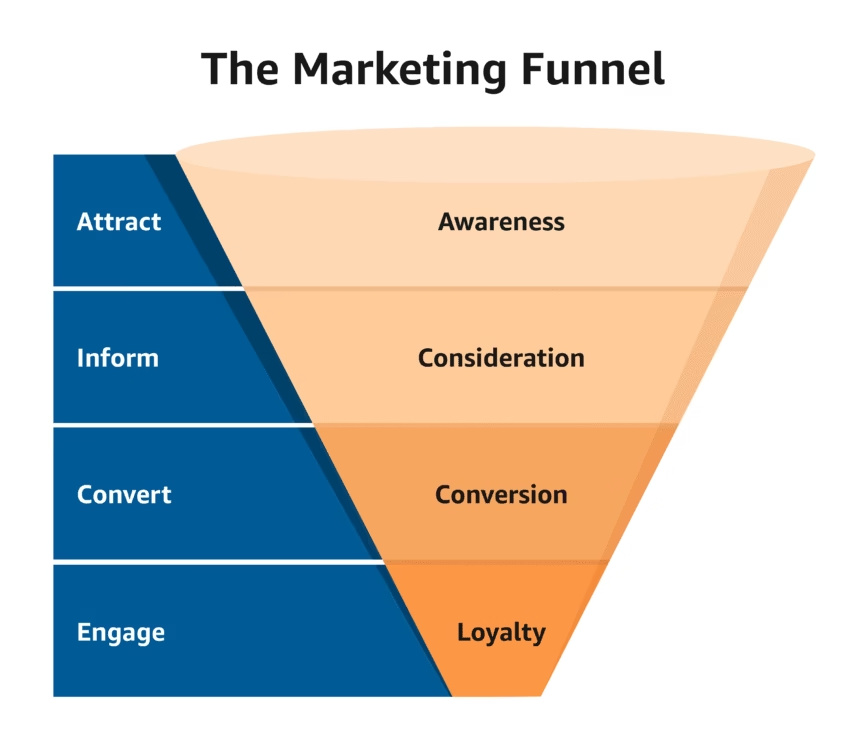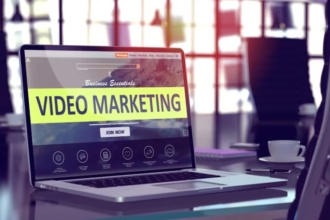Marketing Funnels are the roadmap that turns strangers into customers. In 2025, understanding and using Marketing Funnels is crucial for businesses, big or small. This guide explains key stages and shows how to make funnels work in today’s world.
What Are Marketing Funnels?
A Marketing Funnel is like a journey. First, people learn about your brand. Then they learn more. Finally, they make a purchase. The funnel is wide at the top (lots of people) and narrow at the bottom (few convert).
By guiding people through Awareness, Interest, Decision, and Action, funnels help businesses grow steadily.
Why Marketing Funnels Matter in 2025
Customers in 2025 are smarter and more selective. They compare options, check reviews, and chat on WhatsApp or social media before buying.
If you don’t use Marketing Funnels, you miss chances. Funnels help you:
- Know who sees your ads
- Guide people using useful info
- Remind them to act
- Keep them coming back
Brands that use funnels stay top of mind and win more sales.
Stage 1: Awareness
At the top of the funnel, you build awareness. This stage is about letting people know you exist.
How to create awareness:
- Run simple ads on Facebook, Instagram, or TikTok
- Share useful blog posts or videos
- Use keywords like “how to” or “best for beginners”
- Be active in online groups or forums
The goal is to reach many people. Let them know your brand solves a problem.
Stage 2: Interest
After people know you, you spark interest. Here, they explore your brand further.
Ways to build interest:
- Offer free guides or eBooks
- Send helpful emails after they visit your site
- Show behind-the-scenes videos or stories
- Share case studies or testimonials
When people like your content or trusts your brand, they move down the funnel.
Stage 3: Consideration / Decision
Now, people are comparing options. They ask themselves: Should I buy?
How to influence decisions:
- Offer free trials or discounts
- Host webinars showing how you help
- Show clear product comparisons
- Highlight reviews and success stories
This stage is about trust. Prove that your offer is the best.
Also Read: Brand Dominance: Build A Powerful Digital Marketing Niche
Stage 4: Action (Conversion)
At the bottom of the funnel comes conversion. This is when people buy.
Make it easy to convert by:
- Simplifying your checkout process
- Offering clear payment options (like cards, Paystack, Flutterwave)
- Using strong calls to action like “Buy Now” or “Get Started”
- Sending follow-up reminders to cart abandoners
Once they buy, celebrate and send a thank you. This builds satisfaction and trust.
Stage 5: Loyalty and Advocacy
Funnel work doesn’t end at purchase. A complete funnel includes post-purchase steps:
- Send thank you emails and ask for feedback
- Offer loyalty rewards or referrals
- Share content that helps them succeed
- Encourage them to share their story
Happy customers become repeat buyers and brand ambassadors.
How to Track Marketing Funnels
To master funnels, you need to track:
- Awareness: website visits, ad reach, share rates
- Interest: downloads, email sign-ups, video views
- Decision: webinar sign-ups, cart adds
- Action: number of purchases, conversion rates
- Loyalty: repeat orders, referrals, feedback
This helps you know what stage needs work. If interest is low, improve your content. If conversion is slow, simplify checkout.
Funnel Tools You Can Use
Here are simple tools to build and manage funnels:
- Email: Mailerlite or Sendinblue
- Landing Pages: Wix, Carrd, or Draftbit
- Web Analytics: Google Analytics or Matomo
- Ads: Facebook Ads, TikTok Ads
- WhatsApp Funnels: Use message links and auto-responders
- Payments: Paystack, Flutterwave, or Interswitch
These tools help you set up and track funnels easily without coding skills.
Funnel Mistakes to Avoid
Even smart marketers mess up funnels. Here are common errors:
- Not targeting the right people in Awareness stage
- Using too much sales talk early on
- Forgetting to follow up after interest stage
- Complicating checkout with too many steps
- Ignoring customer feedback after purchase
Funnel Example for Nigerian SMEs
Here’s a real example:
Awareness: Run a Facebook post showing how your handmade salon helps busy moms relax.
Interest: Give a free “5-minute self-care guide” via WhatsApp.
Decision: Offer a 10% off first treatment, valid for one week.
Action: Make the online booking process clear and simple.
Loyalty: After treatment, offer a referral discount and ask for feedback.
A simple funnel like this can double bookings and bring back happy customers.
How to Measure Marketing Funnel Success
Metrics to watch:
- Click-through rate in ads
- Download numbers for freebies
- Webinar attendance
- Cart abandonment rate
- Customer satisfaction and reviews
- Repeat purchase rate
These numbers show you where to improve and where you’re doing well.
Funnel Optimisation Tips
- Test your headlines and visuals often.
- Ask simple questions like “Did this help?” in emails.
- Run retargeting ads for people who looked but didn’t buy.
- Use short video stories showing happy customers.
- Send quick reminders if someone leaves items in cart.
Don’t Miss: Influencer Strategy That Tripled Sales for a Nigerian Brand
Conclusion
Marketing Funnels are your roadmap to success in 2025. By guiding people from Awareness to Conversion, and beyond, you build stronger relationships and steadily grow your business.
Start simple, track results, and optimise each stage. Soon, your funnel will be working day and night, turning strangers into loyal fans. That is the magic of marketing funnels, from Awareness to Conversion.



